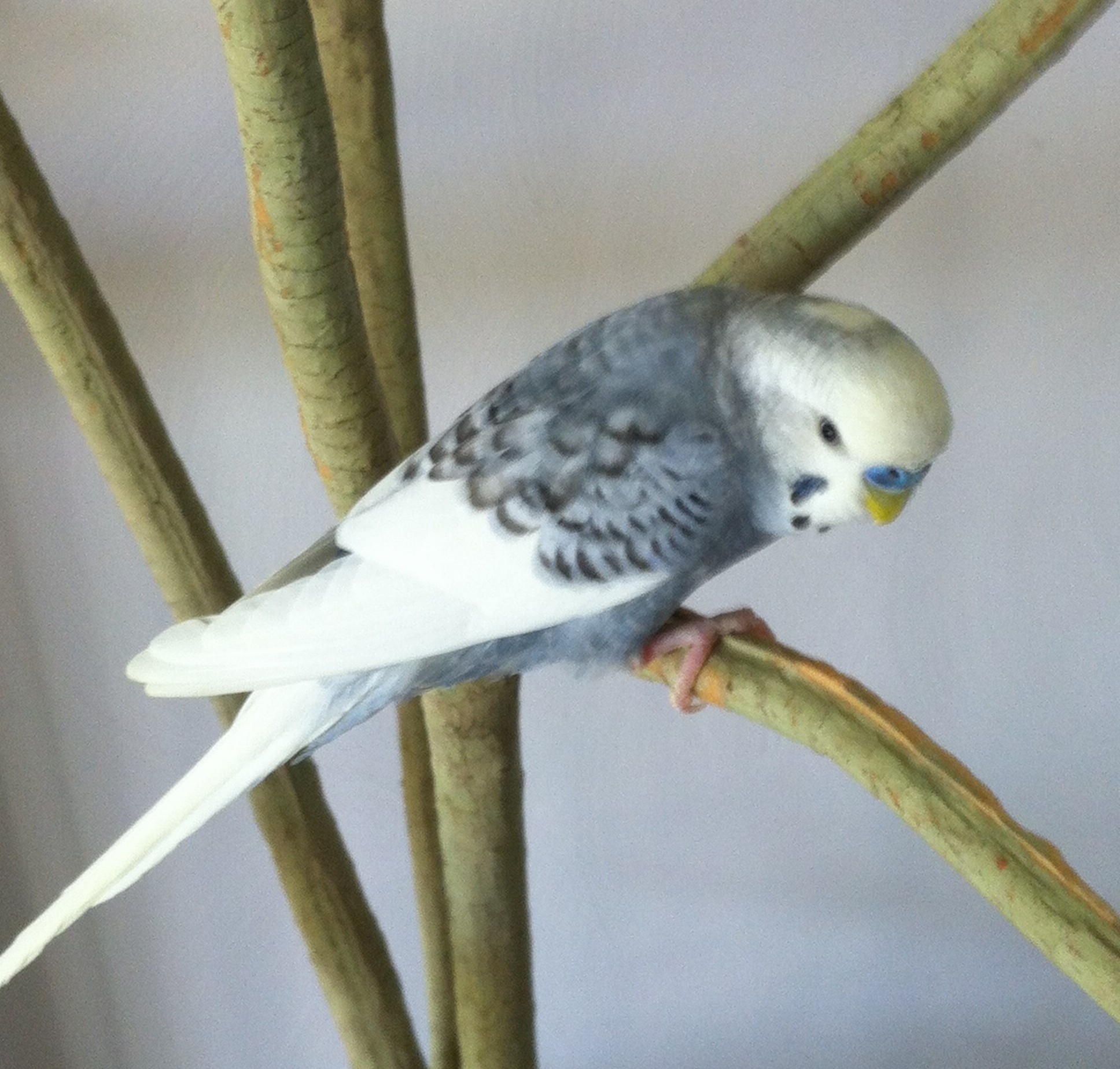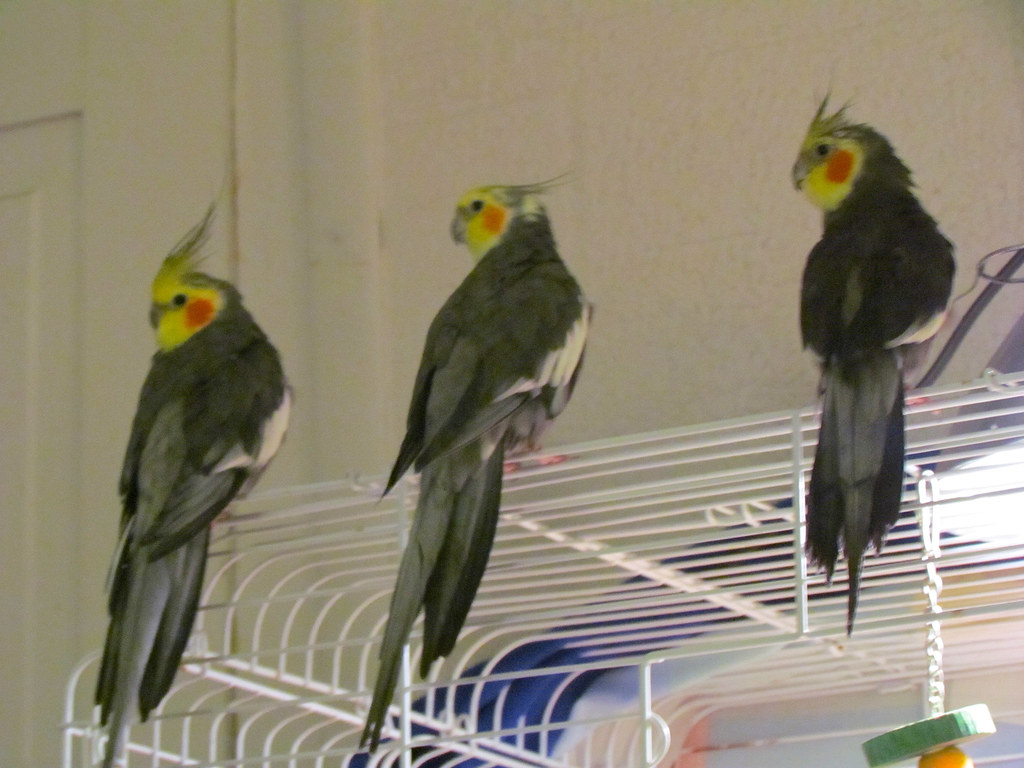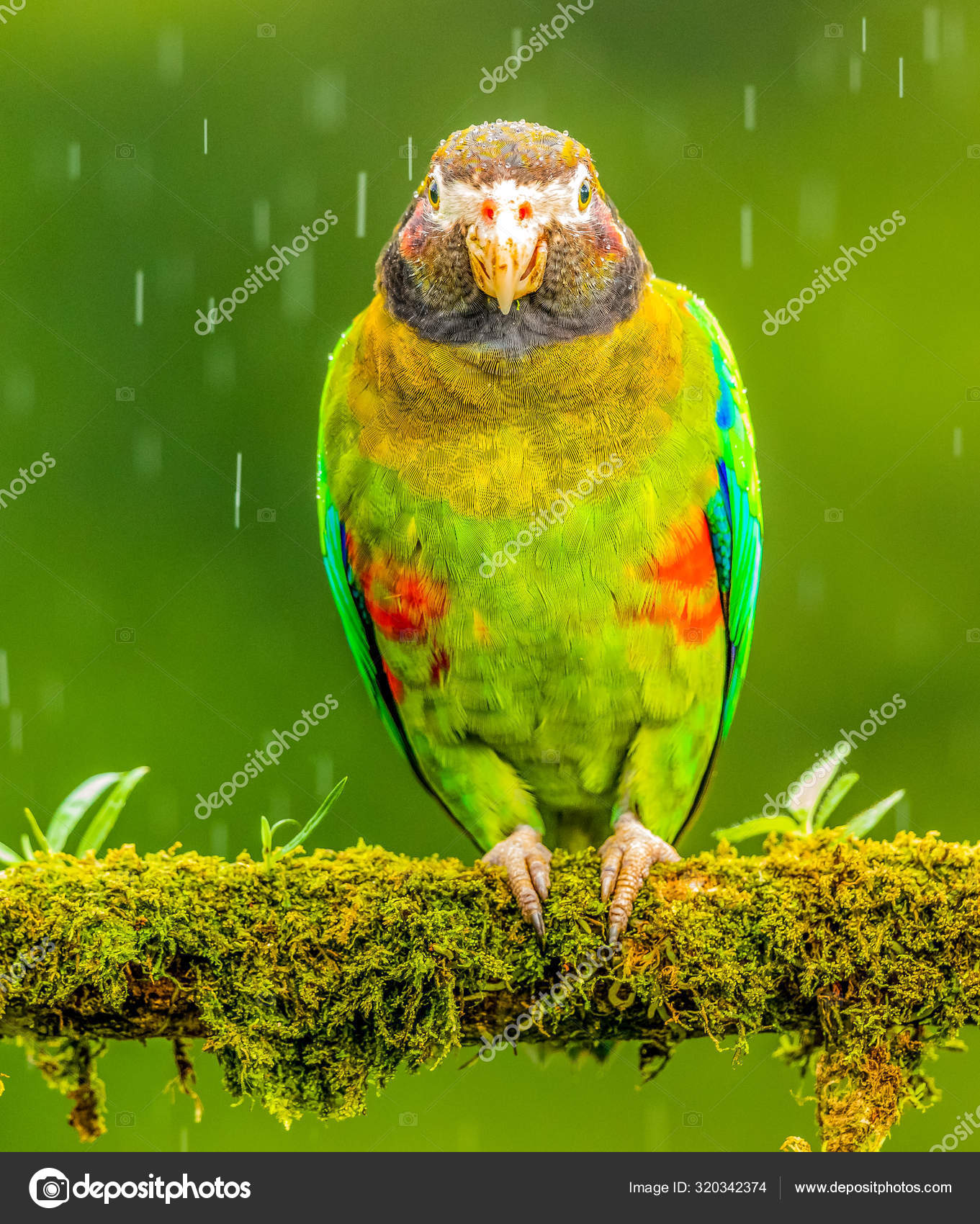Introduction

Parakeets, also known as budgerigars, are popular pets worldwide. These small and colorful birds offer companionship and entertainment. However, determining the sex of a parakeet can be a challenge, especially for those without prior knowledge or experience in avian sexing.
Knowing the sex of your parakeet is essential for various reasons. It allows for proper pairing if you’re considering breeding them, as successful mating pairs require one male and one female. Additionally, understanding their gender helps prevent aggression and maintain a harmonious environment. Male and female parakeets can exhibit different behaviors and vocalizations, which can be better interpreted when their gender is known. Lastly, identifying the sex of your parakeet is crucial for health considerations, as certain issues are specific to each sex.
While visual cues like cere color, head shape, beak color, eye rings, and feather coloration can provide insights into a parakeet’s gender, they are not foolproof. In the subsequent sections, we will explore physical and behavioral traits that can help identify the sex of a parakeet. We will also delve into the option of DNA testing as a more accurate method. By understanding these techniques, you will gain the knowledge and confidence to ascertain the sex of your parakeet and provide appropriate care tailored to their specific needs.
Physical Traits

Differences between male and female parakeets

Male and female parakeets exhibit physical differences that can help identify their gender:
- Size: Males are slightly larger, but careful observation of body proportions is necessary.
- Head Shape: Males have a more rounded head shape, while females have a streamlined head.
- Beak Color: Some males have a brighter beak color, particularly during breeding season.
- Behavior: Males display courting behaviors, while females exhibit nesting behaviors.
Visual cues that can help identify the gender
Visual cues play a significant role in determining a parakeet’s gender:
- Cere Color: Males usually have a blue or purplish cere, while females have a pink or brown cere.
- Eye Rings: Males have more prominent and brighter-colored eye rings.
- Feather Coloration: Some males have brighter plumage, while females display softer colors.
By paying attention to these physical traits and visual cues, you can increase your chances of accurately determining the gender of your parakeet. However, it’s important to note that these methods may not always be 100% reliable, and for a definitive identification, additional techniques such as DNA testing may be necessary.
Continue reading to discover more about behavioral traits and DNA testing in the remaining sections of this blog post.
3. Behavioral Traits:

a. Interactions between Male and Female Parakeets
Male and female parakeets have distinct behaviors when interacting with each other. During courtship rituals, male parakeets display dominant behavior to attract females. They engage in head-bobbing, melodious singing, and even offer food as a display of affection. These behaviors aim to establish a bond and initiate the mating process.
In response, female parakeets exhibit receptive behaviors. They chirp, preen their feathers, and assume a lowered posture. Additionally, females vibrate their tail feathers, signaling their interest and willingness to mate. These behaviors create a communication system between the genders, facilitating pair bonding and reproductive success.
b. Behavior When Alone
Parakeets’ behavior when alone provides further insights into their gender. Male parakeets tend to be more vocal and expressive in solitude. They engage in extensive vocalization, singing songs, chattering, or mimicking various sounds they have learned. This behavior serves as a form of entertainment and self-expression.
On the other hand, female parakeets tend to be quieter when alone. They vocalize less frequently compared to males. However, it’s important to note that individual personalities can vary, and some females may still vocalize occasionally, especially during specific situations or when seeking attention.
c. Other Methods for Determining Gender

Apart from observing behavior, there are other methods to determine the gender of parakeets. One reliable method is to examine the cere, the fleshy area located above the beak. In most parakeet varieties, cere color provides valuable clues about their gender. Males typically have a blue or purplish-pink cere, while females have a lighter, pale pink or beige cere. However, this method is only reliable once the parakeet has reached sexual maturity, usually between 6 to 12 months of age.
It’s worth mentioning that certain parakeet mutations, such as albino or lutino varieties, can complicate determining gender based on cere color alone. In such cases, additional methods like DNA testing or surgical sexing may be necessary for accurate determination.
Understanding the behavioral traits of male and female parakeets, both in their interactions with each other and when alone, along with cere color examination, provides valuable insights into determining their gender. However, for conclusive results, especially in cases of ambiguous cere coloration, additional methods like DNA testing can provide definitive answers. In the following section, we will explore the process of DNA testing for parakeets and discuss its advantages and disadvantages.
DNA Testing

DNA testing is a reliable method for determining the gender of a parakeet. In this section, we will explore the process of DNA testing and discuss its advantages and disadvantages.
Overview of the Process

DNA testing involves collecting a small sample of the parakeet’s DNA, which can be obtained through methods such as blood sampling, feather plucking, or a cheek swab. The sample is then sent to a specialized laboratory for analysis.
At the laboratory, technicians examine the bird’s DNA for specific markers on chromosomes that indicate its gender. Advanced techniques are used to ensure accurate results. The analysis is typically completed within a few days or weeks, depending on the laboratory’s processing time and the chosen testing method.
Advantages and Disadvantages

Advantages
-
Accuracy: DNA testing is highly accurate, with results typically being more than 99% accurate. This level of precision eliminates doubt or misinterpretation.
-
Early Detection: DNA testing can be performed at a very early age, allowing for the early identification of a parakeet’s gender. This is beneficial for planning breeding or creating a harmonious social environment among parakeets.
-
Certainty: Unlike visual or behavioral cues, DNA testing provides definitive proof of a parakeet’s gender. This certainty is important for specific purposes like bird shows or breeding programs.
-
Breeding Purposes: DNA testing plays a crucial role in breeding by accurately identifying the gender of parakeets, ensuring proper pairing and genetic diversity.
Disadvantages
-
Cost: DNA testing can be relatively expensive compared to other methods. However, the accuracy and certainty it offers often outweigh the cost for owners with specific needs or breeding purposes.
-
Invasive Procedure: Collecting a DNA sample may cause stress or discomfort to the bird. It is important to ensure the collection process is carried out by a trained professional or veterinarian to minimize potential harm.
In summary, DNA testing is a highly accurate method for determining the gender of a parakeet. It involves collecting a small DNA sample and sending it to a specialized laboratory for analysis. While DNA testing offers advantages such as accuracy, early detection, certainty, and suitability for breeding purposes, it also has disadvantages, including cost and potential stress. Nonetheless, for parakeet owners seeking reliable gender identification, DNA testing provides a conclusive solution.
Summary

![]()
The summary section recaps the main points covered in the article and provides tips on determining the gender of a parakeet using various methods.
Summary
In this article, we explore the importance of accurately determining the gender of a parakeet. Let’s recap the main points discussed:
-
Physical Traits: Male and female parakeets exhibit distinct differences in their appearance. Males have blue or purplish ceres, while females have pink or beige ceres. Males also have larger, vibrant feathers, particularly on their heads.
-
Behavioral Traits: Understanding the behavioral differences between male and female parakeets provides valuable insights. Males engage in singing and courtship displays, while females may exhibit nesting behaviors.
-
Other Indicators: Determining gender can be challenging, especially in young birds. Consult an avian veterinarian or an experienced breeder for accurate gender determination through DNA testing.
Now, let’s move on to tips on how to tell the gender of a parakeet:
-
Challenges: Identifying gender, especially in young birds, can be difficult due to the lack of prominent physical and behavioral differences. However, with careful observation and knowledge of indicators, it is possible to make an educated guess.
-
Visual Cues: Pay attention to the color and size of the cere, the area surrounding the nostrils. Males typically have blue or purplish ceres, while females have pink or beige ceres. Observe feather patterns, with males often displaying larger and more vibrant feathers, particularly on their heads.
-
Behavioral Differences: Take note of the bird’s behavior, especially during interactions with other parakeets. Males may engage in singing and courtship displays, while females may exhibit nesting behaviors. These behaviors provide additional clues to the bird’s gender.
-
Seek Expert Advice: If unsure about determining the gender of your parakeet, consult an avian veterinarian or an experienced breeder. They possess the expertise and tools necessary for accurate gender determination, including DNA testing if required.
In conclusion, correctly identifying the gender of a parakeet is vital for breeding, socialization, and addressing health concerns. By understanding the physical and behavioral traits associated with each gender and seeking expert advice when needed, you can ensure a better understanding of your parakeet’s needs and well-being.
Conclusion

Understanding the sex of your parakeet is crucial for various reasons. Throughout this article, we explored the physical and behavioral traits that help identify the gender of these delightful birds. We discussed the advantages and disadvantages of DNA testing as a reliable method for determining parakeet sex.
By summarizing the main points covered, we reiterate the challenges involved in sexing parakeets, particularly with young birds. Visual cues, such as plumage coloration or cere appearance, provide initial indications of gender. Observing behavioral traits, such as courtship displays or territorial behavior, offers further insights into a parakeet’s sex.
While various methods exist for sexing parakeets, none are foolproof. DNA testing, despite its accuracy, may not be readily accessible or affordable for all bird owners. Therefore, a combination of visual and behavioral cues, along with expert advice, contributes to a more accurate determination of a parakeet’s gender.
We encourage readers to take action and invest the necessary effort to determine the sex of their parakeets. Consulting with an avian veterinarian or an experienced bird breeder provides valuable guidance in sexing techniques and ensures the well-being of these beloved pets. Understanding your parakeet’s gender helps create a harmonious social environment, address health concerns, and make informed decisions regarding breeding.
In addition to determining the sex of your parakeet, provide a supportive and enriching environment for your feathered friend, regardless of gender. Ensure a spacious cage, a balanced diet, and plenty of mental and physical stimulation. Regular interaction, playtime, and positive reinforcement training contribute to their overall well-being and happiness.
As you continue your journey of parakeet care, share your experiences and knowledge with other enthusiasts. Engage in online communities, join local bird clubs, or attend avian events to expand your understanding and contribute to the collective wisdom of parakeet lovers worldwide.
By taking steps to determine the sex of your parakeet and providing a nurturing environment, you foster a strong bond and enjoy the unique companionship these charming birds offer. Stay curious, attentive, and watch your parakeet thrive in your care.
Now, go forth and embark on this exciting adventure with your beloved parakeets!
Frequently Asked Questions
Frequently Asked Questions
1. How can I tell if my parakeet is male or female?

Determining the gender of a parakeet can be challenging, but there are several indicators you can observe. Look at the color and size of the cere (the fleshy area above the beak). Males typically have blue or purplish ceres, while females have pink or beige ceres. You can also pay attention to feather coloration and size, as males often have larger and more vibrant feathers, particularly on their heads.
2. Can behavior help determine the gender of a parakeet?
Yes, behavior can provide clues about a parakeet’s gender. Males may engage in singing, courtship displays, and more vocalization when alone. Females, on the other hand, may exhibit nesting behaviors and vocalize less frequently. However, individual personalities can vary, so behavior alone may not be conclusive.
3. Are visual cues reliable for identifying the gender of a parakeet?
Visual cues, such as cere color, feather coloration, and head shape, can provide initial indications of a parakeet’s gender. Males usually have blue or purplish ceres, brighter feather colors, and a more rounded head shape. Females typically have pink or beige ceres, softer feather colors, and a streamlined head shape. However, these cues are not always 100% reliable, especially in young birds.
4. What is DNA testing, and how accurate is it for determining a parakeet’s gender?
![]()
DNA testing involves analyzing a parakeet’s DNA to determine its gender. It is a highly accurate method, with results typically being more than 99% accurate. DNA testing can be performed at an early age and provides definitive proof of a parakeet’s gender. It is often used for breeding purposes or when visual cues are inconclusive.

Leave a Reply